Disclosure: We may earn commissions if you purchase products after clicking on a link from our site.
Do you want to know how to do deer hunting in different seasons properly? Deer hunting can be done in many seasons. Learning how to hunt white-tailed deer in all seasons makes you a better hunter and allows you to hunt year-round. When hunting, preparation is important regardless of the season. Scouting, scent control, the right gear, and weapons are still essential. In this article, we discuss and share tips and tricks on how to deer hunt in different seasons.
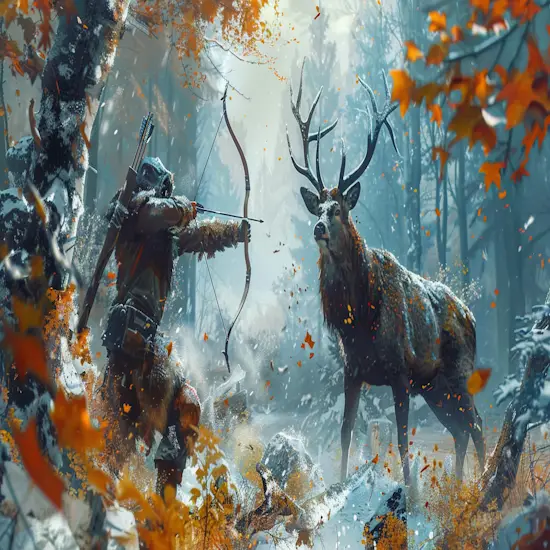
Table of Contents
- 1 Key Takeaways
- 2 State-by-State Deer Hunting Seasons
- 3 Archery Vs Firearms Seasons
- 4 Winter Deer Hunting Details
- 5 Spring Deer Hunting Opportunities
- 6 Summer Deer Hunting Considerations
- 7 Fall Deer Hunting Strategies
- 8 Pros and Cons of Hunting Seasons
- 9 Best Hunting Season in the USA
- 10 Bag Limits and Regulations
- 11 Preparation Tips for Deer Hunting
- 12 The Bottom Line
Key Takeaways
- Winter deer hunting: Focus on dawn/dusk activity, shelter-seeking behavior, hunting near food sources, use of tree stands, and tracking fresh tracks.
- Spring deer hunting: Scout feeding areas, use decoys/calls, prepare for different challenges, focus on preparation, and utilize scouting for success.
- Gear selection: Choose camouflage clothing, tailor gear, select appropriate equipment, and adapt to the hunting environment for success.
- Hunting location scouting: Scout based on deer habits, set up trail cameras, consider wind direction, and ensure proper concealment for effective hunting.
- Safety measures: Wear visible clothing, carry safety gear, inform others of plans, prioritize preparation, and focus on essential safety precautions during hunting.
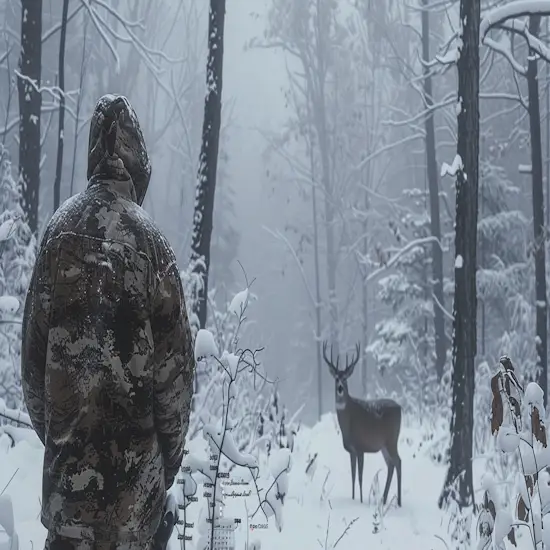
State-by-State Deer Hunting Seasons
Exploring the diverse deer hunting seasons across different states provides deer hunters with unique opportunities and challenges throughout the regular season.
In Alabama, deer hunters navigate five zones with distinct rules and periods. Alaska’s season stretches from August 1 to December 31, excluding archery and muzzleloaders.
Arizona offers general, youth, CHAMP, and archery seasons, each with specific dates from October to December. North Dakota’s deer season includes white-tailed and mule deer, with archery, firearms, and muzzleloader seasons spread from September to January.
Ohio’s nationwide dates feature varying bag limits per county, with archery from September to February and firearms in late November. Oklahoma boasts around 650,000 deer and seasons running from October to January for archery and November to December for firearms.
Oregon’s deer hunting requires permits based on county and weapon, with firearms and archery seasons from August to November. Pennsylvania’s wildlife management areas dictate varied species and weapon combinations with unique season dates. Rhode Island permits deer hunting by lottery with specific zones and weapon restrictions.
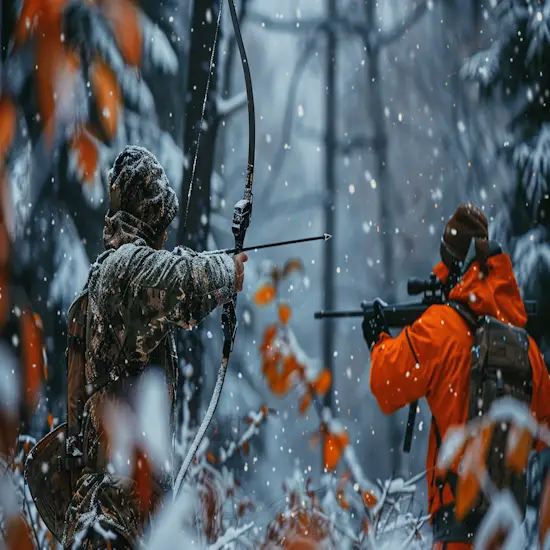
Archery Vs Firearms Seasons
When choosing between archery deer season and firearms deer season for deer hunting, consider the accuracy of archery equipment and the impact of firearms on your hunting experience.
Archery provides a stealth advantage due to its quieter nature, while firearms may offer a distance advantage in reaching targets. Understanding the nuances of each season can enhance your hunting strategies and overall success in the field.
Accuracy in Archery
For mature buck hunting enthusiasts, understanding the difference in accuracy between archery and firearms seasons is essential for a successful hunting experience. When it comes to archery hunting, precision is key due to the shorter range and quieter nature of the equipment. Here are three important points to take into account regarding accuracy in archery:
- Archery demands more skill and practice to guarantee precise shots.
- The effective range of archery equipment is typically shorter than that of firearms.
- Factors like wind speed and direction have a more significant impact on arrow trajectory compared to bullets.
Impact of Firearms
During firearm seasons compared to archery seasons, deer hunters experience a notable difference in the impact of their equipment on deer hunting success. Firearms provide hunters with increased range and power, making it easier to take down wild animals from a distance. The use of rifles during firearms season allows for more precise shots and quicker kills compared to the silent and shorter-range bows used in archery season.
The sound of a gunshot can startle antlered bucks, but the greater effectiveness of firearms compensates for this. Hunters during firearms season often have a higher success rate due to the advantages offered by their equipment.
It’s essential to adapt your hunting strategies based on the equipment you use to maximize your chances of a successful hunt.
Distance Advantage
Hunters using firearms during deer hunting season have a significant advantage in distance over those using archery equipment. This distance advantage can greatly impact your hunting success and overall experience. Here’s why:
- Firearms allow you to accurately shoot at targets that are further away, increasing your chances of hitting your target.
- With firearms, you can take down a big buck from a safe distance, reducing the risk of spooking the big game animal.
- The extended range of firearms provides a more comfortable and controlled shooting position, enhancing your accuracy and precision in the field.
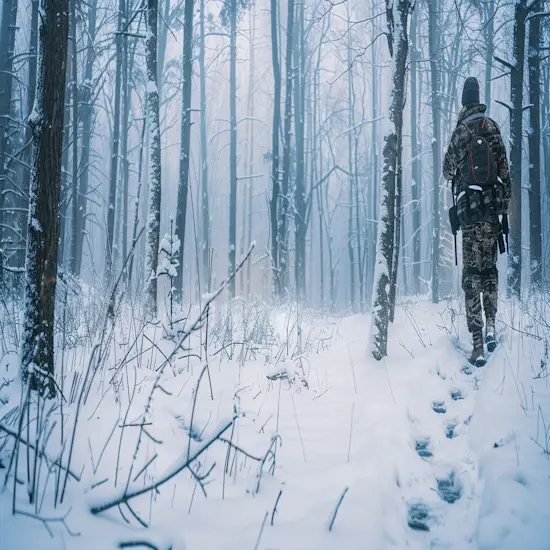
Winter Deer Hunting Details
Winter deer hunting brings unique challenges and rewards. Understanding antlered deer behavior during the colder months is essential.
It is important to equip yourself with appropriate strategies, tracking techniques, and cold-weather gear to maximize your success in winter hunting.
Winter Deer Behavior
In the winter months, understanding deer behavior becomes essential for successful hunting expeditions. Here are some key points to keep in mind:
- Deer are more active during dawn and dusk, so plan your hunting trips accordingly.
- They tend to gather in groups near reliable food sources like crops or dense forests.
- Cold weather drives deer to seek shelter in thickets or areas with good cover.
Hunting Strategies
Understanding deer behavior in winter months is key to developing effective hunting strategies for a successful expedition. In winter, legal bucks focus on conserving energy and seeking food in areas with less snow.
To increase your chances of a successful hunt during this season, consider hunting near food sources like agricultural fields, oak ridges, or areas with shrubs and evergreens. Since deer move less in cold weather, importance is vital. Utilize tree stands or ground blinds strategically placed near known deer trails or feeding areas. Also, pay attention to the wind direction to avoid detection.
Additionally, tracking deer movement patterns and adjusting your hunting locations accordingly can improve your winter hunting success.
Tracking Techniques
Utilize tracking techniques to enhance your success in winter deer hunting expeditions. Winter can be a challenging time to hunt deer, but with the right tracking skills, you can increase your chances of a successful hunt.
Here are some tips to help you track deer effectively in the winter:
- Look for fresh tracks in the snow or mud to determine recent deer activity.
- Pay attention to browse lines where deer have been feeding on vegetation.
- Use binoculars to scan the surrounding area for deer movement, especially in open fields or clearings.
Cold Weather Gear
Prepare for your winter deer hunting expeditions by ensuring you have the appropriate cold-weather gear to stay warm and comfortable in harsh conditions. Invest in insulated clothing like thermal base layers, fleece jackets, and waterproof outer shells to protect against wind and moisture.
Don’t forget thick socks, insulated boots, gloves, and a warm hat to retain body heat. Hand warmers and heated insoles can offer additional warmth during long hours outdoors. Opt for gear with moisture-wicking properties to stay dry and avoid hypothermia.
Layering your clothing allows for easy temperature regulation as you move between active and stationary periods while hunting. Stay prepared and enjoy a successful winter deer hunting experience.
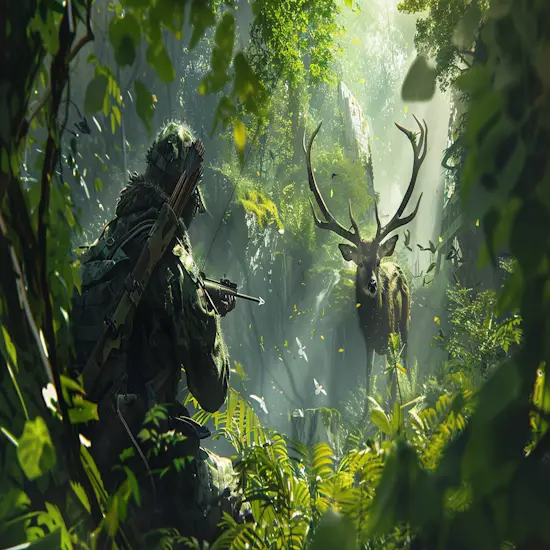
Spring Deer Hunting Opportunities
If you’re preparing for spring deer hunting, you’ll need to:
- brush up on tactics,
- scout the best locations, and
- make sure you have the right gear essentials.
Spring offers different challenges and opportunities compared to other seasons, so preparation is key to a successful hunt.
Spring Deer Hunting Tactics
During the spring deer hunting season, hunters can implement strategies to maximize their hunting opportunities. Here are some tactics to help you make the most of your spring deer hunting experience:
- Focus on Feeding Areas: Deer are actively seeking food sources in the spring to regain energy after winter. Targeting feeding areas such as fields, crop fields, or new growth areas can increase your chances of encountering deer.
- Utilize Scouting: Take the time to scout the area before the season begins. Look for signs of deer activity, such as tracks, droppings, and rubs, to identify high-traffic areas and plan your hunting strategy accordingly.
- Use Decoys and Calls: During the spring, deer may respond well to decoys and calls. Using decoys to attract deer and calls to mimic their sounds can lure them closer for a better shot opportunity.
Best Locations for Spring
When hunting deer in the spring, consider targeting areas abundant in fresh vegetation and water sources to maximize your chances of a successful hunt. Look for locations where new plant growth is flourishing, as this attracts deer seeking nourishment after the winter months.
Spring is a time of renewal, and deer will be actively foraging in areas rich in greenery. Explore nearby creek beds, ponds, or other water sources as deer frequent these areas to drink and feed. Pay attention to signs of deer activity like tracks, droppings, and browsing marks on vegetation.
Gear Essentials for Spring
Prepare for spring deer hunting by making sure you have the essential equipment needed for a successful hunt. Ensure you have the following gear with you:
- Quality Binoculars: Opt for a pair of high-quality binoculars to scout for deer from a distance and guarantee a clear view of your target.
- Scent Control Products: Invest in scent control sprays or clothing to minimize your scent and avoid alerting deer to your presence.
- Camouflage Clothing: Dress appropriately in camouflage gear to blend into your surroundings and increase your chances of a successful hunt.
Having these essential items will enhance your spring deer hunting experience and give you a better chance at a successful outing.
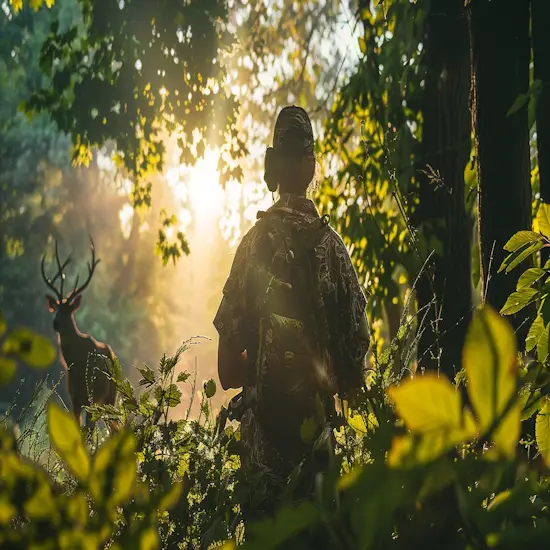
Summer Deer Hunting Considerations
When hunting deer in the summer, remember to take into account heat management strategies, observe wildlife movement patterns, and prioritize early morning hunting for better chances of success.
Tracking the cooler times of the day can help you locate deer more effectively in the summer heat. Keep in mind that deer tend to be more active during low-light hours, making early mornings ideal for hunting during this season.
Heat Management Strategies
During the summer deer hunting season, it’s crucial to implement effective heat management strategies to ensure the safety and well-being of both the hunter and the deer.
Here are some essential tips to help you beat the heat while out in the field:
- Hydrate regularly to prevent dehydration and maintain energy levels.
- Dress in lightweight, breathable clothing to stay cool and comfortable.
- Hunt during the cooler parts of the day, such as early morning or late evening, to avoid the peak heat hours.
Wildlife Movement Patterns
Understanding wildlife movement patterns is essential for successful summer deer hunting. This knowledge allows you to anticipate deer behavior and strategically position yourself for a higher chance of a successful hunt.
During the summer, deer tend to be more active during the early morning and late afternoon when temperatures are cooler. They seek shade and water sources to stay cool, so focusing your hunting efforts near these areas can increase your chances of spotting deer.
Pay attention to natural food sources like fruits, nuts, and vegetation that deer frequent during this season. Additionally, setting up trail cameras can help you monitor deer movement patterns and determine the best locations for your hunting stand.
Early Morning Hunting
In the early morning hours of summer, maximize your deer hunting success by strategically positioning yourself near areas deer frequent for shade and water sources.
- Set up near watering holes or streams where deer come to drink.
- Look for shaded areas like tree lines or thickets where deer seek refuge from the sun.
- Consider positioning yourself downwind from these spots to avoid alerting the deer to your presence.
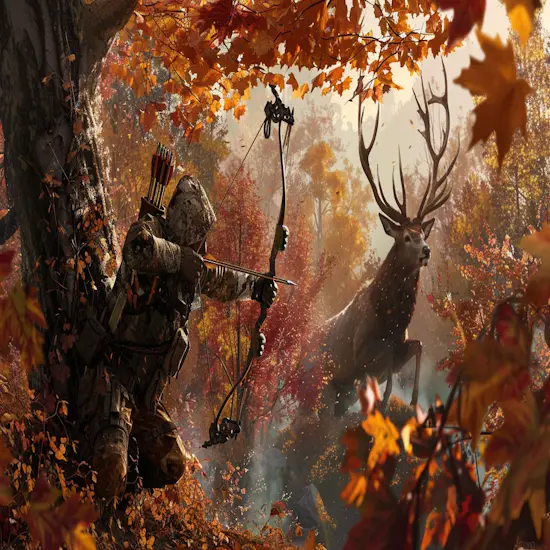
Fall Deer Hunting Strategies
When preparing for fall deer hunting, you need to scout prime locations to increase your chances of spotting deer. Utilize deer calls to attract them closer and enhance your hunting experience. Tracking fresh signs and adapting to the weather conditions are key strategies for a successful hunting season.
Scouting Prime Locations
To maximize your chances of success during fall deer hunting, scout prime locations with abundant food sources and strategic cover. When scouting for the perfect hunting spot, consider the following:
- Look for areas with a variety of mast-producing trees like oak, beech, or hickory.
- Identify natural funnels and pinch points where deer are likely to travel.
- Seek out areas with thick vegetation or brush for deer to bed down during the day.
Utilizing Deer Calls
Utilize deer calls strategically during the fall hunting season to attract and engage deer effectively in your hunting area.
Deer calls come in various types, mimicking different deer sounds like grunts, bleats, and rattles. Grunt calls are great for simulating dominant bucks, while bleat calls imitate does or fawns to attract deer looking for companionship. Rattling antlers can replicate the sound of bucks fighting, drawing in curious or territorial deer.
When using electronic calls, remember to start softly and then increase the volume gradually. It’s crucial to practice using these calls before heading out to make sure you can produce realistic sounds. You can read a review of the best predator calls if you need one.
Tracking Fresh Signs
Tracking fresh signs while deer hunting in the fall is essential for increasing your chances of a successful hunt. To enhance your tracking skills and maximize your hunting experience, consider the following tips:
- Look for Fresh Scat: Fresh deer droppings indicate recent deer activity in the area.
- Check for Disturbed Leaves: Deer often leaves a trail of disturbed leaves or vegetation as they move through the woods.
- Scan for Rubs and Scrapes: Pay attention to tree rubs and ground scrapes, as these are signs of deer marking their territory and can help you determine their travel routes.
Adapting to Weather
Traversing the shifting weather conditions during the autumn can greatly affect your deer hunting strategies. As fall progresses, be prepared for variable weather patterns.
Utilize the cooler mornings to your advantage, as deer are more active during these times. When temperatures rise during the day, deer may seek shade and water, making them harder to spot. Adjust your hunting locations accordingly, focusing on areas with good cover and nearby water sources.
Pay attention to wind direction and speed, as deer rely heavily on their sense of smell. Use the wind to your advantage by positioning yourself downwind from where you expect deer to approach. Adapting to weather changes will increase your chances of a successful hunt during the fall season.
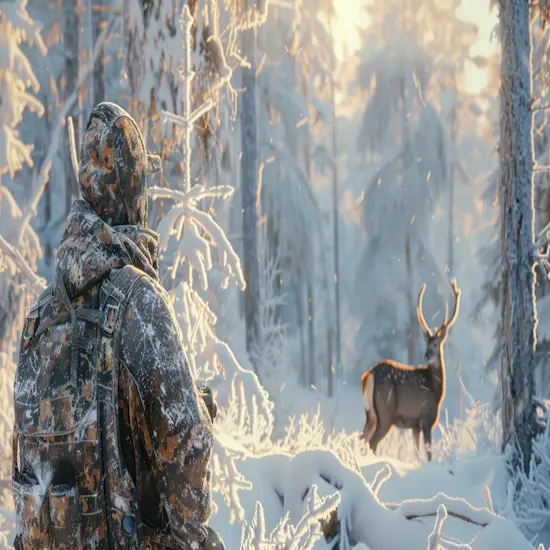
Pros and Cons of Hunting Seasons
Like anything, there are pros and cons of the hunting seasons. Seasonal hunting benefits include the enjoyment of different hunting experiences and the opportunity to adapt strategies based on changing conditions.
Wildlife conservation impact involves managing animal populations and ecosystems through regulated hunting practices.
Moreover, hunting regulation aims to balance conservation efforts with recreational hunting while ensuring sustainable wildlife populations.
Seasonal Hunting Benefits
Hunting seasons offer both advantages and drawbacks for hunters and wildlife enthusiasts alike.
Pros:
- Population Control: Hunting seasons help regulate animal populations, preventing overpopulation and ecosystem imbalance.
- Safety: Clearly defined hunting seasons reduce the risks of accidental shootings and guarantee safer hunting practices.
- Sustainability: By limiting hunting to specific periods, wildlife populations have time to replenish, promoting long-term conservation efforts.
Cons:
- Safety Concerns: Hunting involves powerful and dangerous weapons that can injure someone accidentally.
- Animal Suffering: There is always the possibility of animal suffering if a fatal shot is not delivered the first time.
Wildlife Conservation Impact
Regulating wildlife populations through designated hunting seasons is crucial for maintaining ecosystem balance and supporting long-term conservation efforts. Hunting seasons help control deer populations, preventing overgrazing that can damage habitats and threaten other species. By managing deer numbers, hunting contributes to healthier forests and reduces the risk of deer-vehicle collisions.
Additionally, revenue generated from hunting licenses and fees often funds conservation programs, habitat restoration, and wildlife research. However, hunting seasons must be carefully monitored to prevent overharvesting and guarantee sustainable deer populations. Properly regulated hunting can be a valuable tool for wildlife conservation, promoting biodiversity and preserving natural ecosystems for future generations to enjoy.
Hunting Regulation Effectiveness
Maintaining a balance in the ecosystem through designated hunting seasons is essential for wildlife conservation efforts. Hunting regulation effectiveness is vital in managing animal populations and preserving habitats. Here are some key points to ponder:
- Population Control: Hunting seasons help regulate animal populations, preventing overpopulation that can lead to habitat destruction and food scarcity.
- Species Diversity: By controlling certain animal populations, hunting allows for the protection of other species that might be impacted by overgrazing or competition for resources.
- Funding Conservation: Hunting permits and fees contribute to funding conservation efforts, supporting wildlife management programs, and habitat restoration projects.
Through well-managed hunting regulations, wildlife populations can thrive while maintaining a sustainable environment for future generations.

Best Hunting Season in the USA
When considering the best hunting season in the USA, you should focus on ideal hunting months, top hunting locations, and prime hunting techniques. These factors play a significant role in determining your hunting success and overall experience. Understanding the nuances of each season will help you plan effectively and maximize your hunting opportunities.
Ideal Hunting Months
For the best hunting season in the USA, consider the ideal months for deer hunting based on the diverse seasons across different states.
- October: Many states kick off their deer hunting seasons in October, offering mild weather and the chance to catch deer during their rutting period.
- November: Known as prime hunting time in numerous states, November provides cooler temperatures and increased deer activity.
- December: Late-season hunting in December can be rewarding as deer are more concentrated, preparing for the winter months ahead.
These months offer varying hunting experiences, from the excitement of the rut to the strategic late-season hunts, catering to different preferences and hunting styles across the country.
Top Hunting Locations
To discover the best hunting locations during the peak hunting season in the USA, explore the diverse landscapes and abundant wildlife populations across different states.
Head to Alaska for a deer season that stretches from August 1 to December 31, offering a unique hunting experience.
Arizona provides various categories like general, youth, CHAMP, and archery seasons, each with its specific timeframe.
North Dakota is ideal for deer hunting with separate seasons for white-tailed and mule deer, including archery, firearms, muzzleloaders, and youth hunters’ seasons.
Ohio offers consistent deer hunting season dates nationwide with varying bag limits per county. Oklahoma boasts an estimated deer population of around 650,000 and provides archery, firearms, muzzleloader, and youth hunters’ seasons for hunting enthusiasts.
Prime Hunting Techniques
Get ready to elevate your hunting game by mastering prime techniques during the best hunting season in the USA.
- Scouting: Start by scouting the hunting area before the season begins to identify deer patterns and gather valuable information.
- Camouflage: Invest in quality camouflage gear to blend seamlessly with the surroundings and remain undetected by deer.
- Shot Placement: Practice shot placement to guarantee clean and ethical kills, aiming for essential organs like the heart and lungs.
Perfecting these techniques will greatly enhance your hunting success during the prime hunting season, allowing you to make the most out of your hunting experience.
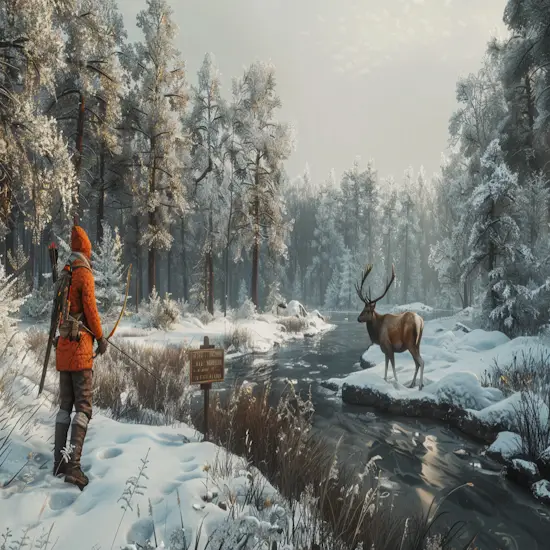
Bag Limits and Regulations
When you hunt, it’s important to understand the daily bag limit specifics for each season. Always make sure you are aware of the seasonal hunting rules and regulations that apply in your area. Compliance with these rules not only guarantees a successful hunt but also supports wildlife conservation efforts.
Bag Limit Specifics
Daily bag limits and regulations for deer hunting vary by state and are essential to understand before heading out into the field. Here are some key points to keep in mind:
- Bag limits dictate the number of deer you’re allowed to harvest.
- Regulations often specify the sex and age of deer that can be hunted.
- Some states have different bag limits for different hunting seasons.
Understanding these specifics will help you stay compliant with the law and contribute to sustainable deer populations. Be sure to check your state’s regulations and familiarize yourself with the bag limits before starting on your hunting trip.
Seasonal Hunting Rules
Before embarking on your hunting trip, ensure you are aware of the seasonal rules and bag limits that apply in your hunting area. These special regulations vary by location and can impact your hunting experience. Bag limits restrict the number of deer you can harvest, ensuring sustainable population levels.
Seasonal rules dictate the specific dates when hunting is allowed, as well as any weapon restrictions or hunting zones. Failure to comply with these regulations can result in fines or penalties. It’s crucial to familiarize yourself with the rules set by your state’s wildlife management authorities.
Compliance With Regulations
Make sure you understand and comply with the bag limits and regulations set by your state’s wildlife management authorities while deer hunting. It’s essential to adhere to these rules to guarantee the sustainability of deer populations and the overall ecosystem. Here are some vital points to keep in mind:
- Check the specific bag limits for deer hunting in your area.
- Familiarize yourself with the legal hunting seasons and permitted hunting methods.
- Obtain the necessary hunting license and permits before heading out to hunt.
Wildlife Conservation Measures
Adhere to wildlife conservation measures, including bag limits and regulations, while participating in deer hunting activities. Bag limits are set to manage deer populations sustainably, ensuring the ecosystem’s health. Regulations dictate the number and type of deer you can harvest, promoting responsible hunting practices. By following these guidelines, hunters help in preserving the balance of wildlife in their habitats.
Bag limits prevent over-harvesting, protecting deer populations for future generations. Regulations also help in controlling hunting activities, ensuring essential and sustainable practices. Remember, compliance with these measures is vital for the long-term conservation of deer and their habitats. Always stay informed about the specific bag limits and regulations in your hunting areas to contribute positively to wildlife conservation efforts.
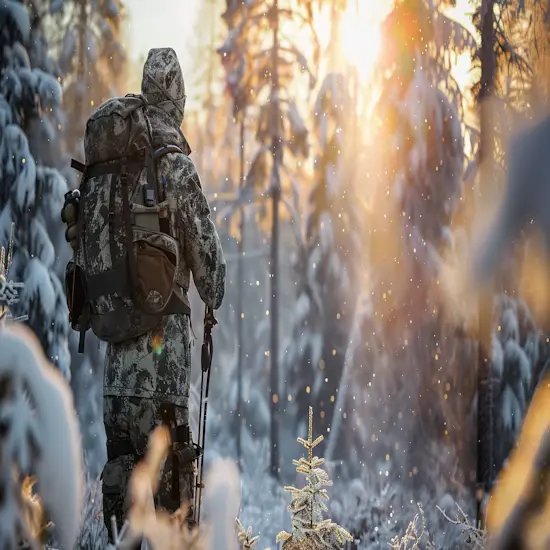
Preparation Tips for Deer Hunting
Before embarking on your deer hunting expedition, make sure you’re well-prepared. Select the appropriate gear for your hunting trip, scout your hunting location, and prioritize safety measures.
Additionally, familiarize yourself with tracking and stalking techniques, and practice shooting drills to enhance your skills.
Gear Selection Tips
When gearing up for deer hunting, make sure you select the appropriate equipment tailored to your hunting environment and preferences.
- Choose camouflage clothing that matches the surroundings to blend in effectively.
- Opt for a rifle scope with good magnification for clearer target acquisition.
- Pack essential gear such as a reliable knife, first aid kit, and water supply for emergencies.
Selecting the right gear can greatly enhance your hunting experience by increasing your chances of success and ensuring you’re prepared for any situation that may arise.
Make sure your equipment is in good condition, suits the terrain you’ll be hunting in, and aligns with your hunting style to make the most of your deer hunting expedition.
Hunting Location Scouting
To maximize your chances of a successful deer hunting expedition, start by scouting potential hunting locations that align with the habits and patterns of deer in your area. Look for signs like deer tracks, droppings, bedding areas, and feeding grounds. Pay attention to the terrain, water sources, and nearby food availability.
Set up trail cameras to monitor deer movement and determine the best spots for your hunt. Consider wind direction and concealment when selecting your hunting location. By thoroughly scouting and familiarizing yourself with the area, you can increase your chances of a successful and rewarding deer hunting experience.
Safety Measures Importance
Secure your safety during deer hunting season by prioritizing proper preparation and adherence to essential safety measures. To guarantee a successful and secure hunting experience, follow these key safety tips:
- Always wear bright, visible clothing to make yourself easily identifiable to other hunters.
- Make sure to carry essential safety gear such as a first aid kit, a flashlight, and a communication device.
- Inform someone of your hunting plans, including your location and expected return time, for added safety assurance.
Tracking and Stalking
For effective deer hunting preparation, focus on refining your tracking and stalking skills to enhance your hunting experience. Tracking involves observing signs like footprints, droppings, and broken twigs to follow deer movement. Stalking demands patience and stealth as you quietly approach your target.
Practice moving silently through different terrains, mastering the art of blending in with your surroundings. Pay attention to the wind direction to prevent your scent from alerting deer. Learn to read animal behavior to anticipate their movements. Enhancing these skills will increase your chances of a successful hunt.
Shooting Practice Drills
Enhance your deer hunting skills by incorporating shooting practice drills into your preparation routine.
- Set up targets at varying distances to simulate real hunting conditions.
- Practice shooting from different positions like standing, kneeling, and prone to improve your versatility.
- Work on your accuracy by focusing on shot placement and consistency in hitting the target.
The Bottom Line
Deer hunting in different seasons involves carefully planning for each hunting season. Different strategies need to be implemented in each deer hunting season. Additionally, the gear, clothing, and other items may vary depending on the hunting season.
Each season offers its challenges and rewards, therefore make sure to plan accordingly and adapt to the changing conditions. In this article, we discussed deer hunting in different seasons and shared strategies as well as planning tips to have a successful hunting trip in each hunting season.
This article about deer hunting regulations and laws discusses the regulations and laws to avoid violations. Additionally, you can learn more tips for hunting from the best whitetail deer hunting tips.
